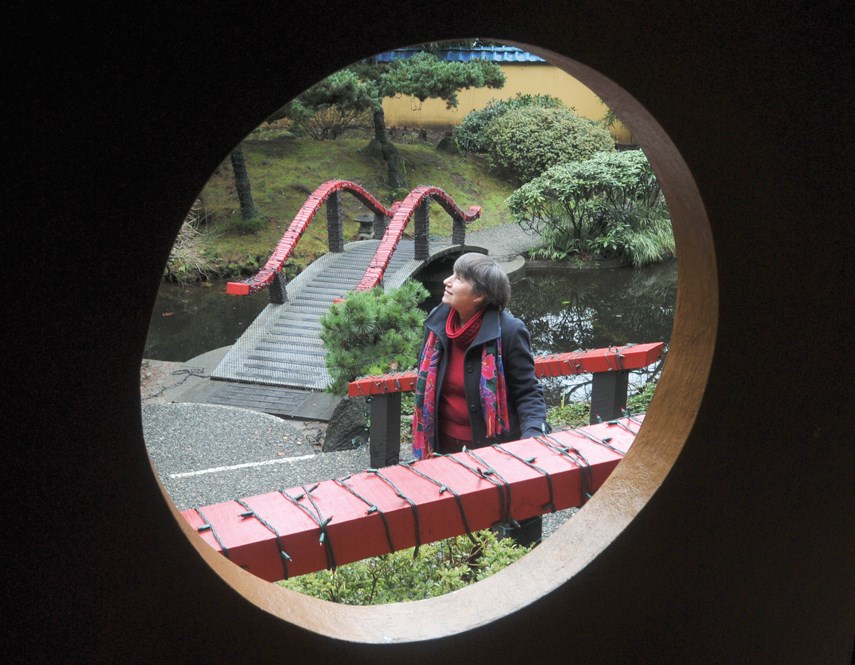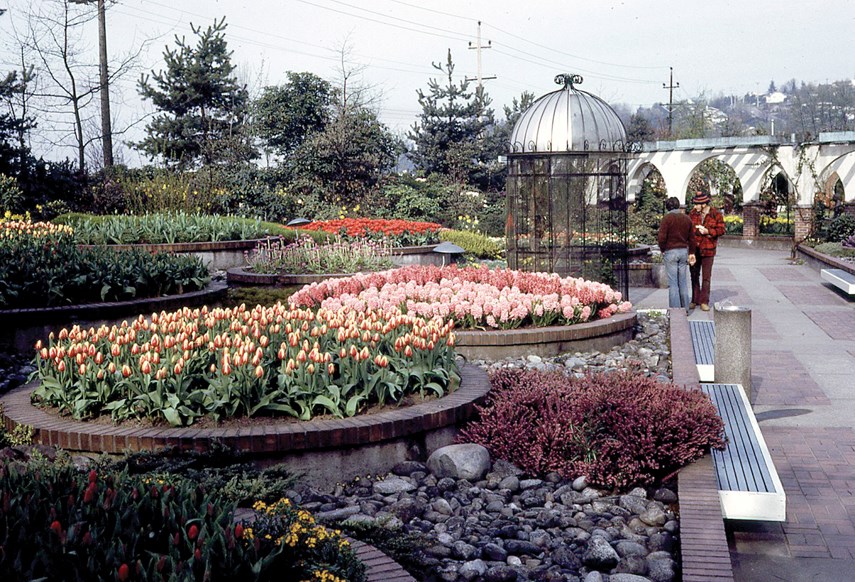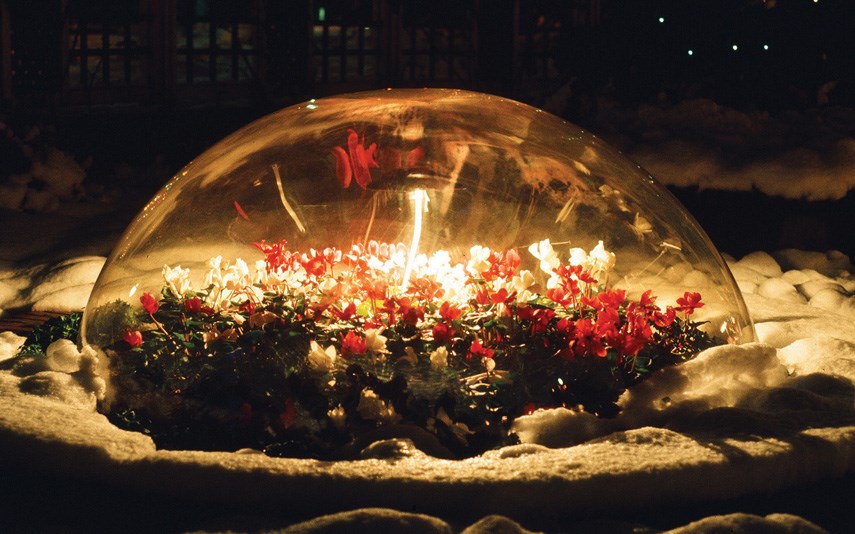Call it divine intervention or call it rotten luck, but Neptune, the Roman god of the sea, found himself swept away in a current of bad timing.
In the early-1980s, Canadian Park & Tilford Distilleries Ltd., which stretched across 24 acres from what’s now Main Street all the way up to Keith Road in North Vancouver, closed after decades of producing and distributing fine spirits.
Park & Tilford Gardens, the distillery’s onsite public green space which for years had provided the community with equally intoxicating experiences, was forced, for a brief time starting in 1984, to close as well. The gardens fell into a state of disrepair shortly thereafter.
“I think Neptune was probably destroyed at that time,” says Adrienne Brown, describing a life-size fiberglass statue of the mythological deity that once stood tall, surrounded by running water and a ceramic embankment, in the gardens but was lost to time’s cruel hand.
“When the distillery shut down … there was about two or three years where it was essentially mothballed, the gardens – they were just fenced off.”
The gardens reopened around 1987 and since then — though without a statue of King Neptune — the green space has remained in bloom and open to the public.
The gardens were officially dedicated by former City of North Vancouver mayor Carrie Cates on Jan. 29, 1969, or 50 years ago next week.
Brown, who sits on the Garden Review Board, an independent appointed body established by the City of North Vancouver to oversee maintenance of the gardens, is jubilant when talking about the revered space, which is now managed by Bentall Kennedy along with the adjacent commercial area.

Brown’s father, Harry Webb, was the one who designed the gardens back in the early 1960s. George D. Kuhn, who was the CEO and chairman at Park & Tilford Distilleries at the time, wanted a set of public display gardens installed onsite in order to promote the distillery brand, provide a public amenity and offer “the distillery administrative employees a place to sit and eat their luncheon,” explains Brown.
In 1964, inspired by display gardens he encountered in the U.S. which often featured stunning displays of botany and odes to horticulture, Webb, who was part of Justice & Webb Landscape Architects, presented distillery management with a design featuring seven distinct gardens that linked together like a cog in a machine.
The designs were accepted and construction commenced soon after. The seven gardens, which are mainly still standing today, included the Colonnade Garden, Rhododendron Garden, Flower Garden, Oriental Garden, Native Wood Garden, Rose Garden and Greenhouse Garden.
There was flora and there was fauna. Visitors to Park & Tilford Gardens in the ’60s and ’70s might remember an aviary which was home to sulphur-crested cockatoos, and Indian Ringneck parakeets; There was bronze busts, created by local sculptor Jack Harman, of botanist Carl Linnaeaus and plant explorers such as David Douglas and Archibald Menzies; giant redwoods and magnolia trees were planted; and in the dead of wintertime guests might have encountered certain flowerbeds magically in full bloom, housed under Plexiglas domes that kept them visible to the marvelled eye and warm enough to grow abundantly.
“What is very special about it, and I would say unique in a physical way, is the way that so many individually themed spaces are essentially interrelated,” says Brown. “Park & Tilford Gardens is a bit like a younger sibling for me because my father spent about a decade designing it full time and after that he remained involved off and on for another decade. It was very much a part of my life when it was under construction.”
The 500,000th visitor to the gardens was honoured with a ceremony in 1972, and countless more have graced the gardens’ paths since then, notes Brown.
Passionate local citizens, politicians and the community at large were responsible for the revival of the gardens following the closing of the distillery in the ’80s, she says.
“They could see that several million dollars had been spent in building them and they recognized that not only would that be a terrible waste, less than 15 years after it was built, but also there was very strong love for the gardens on the part of especially the community in that part of North Vancouver,” says Brown, adding that she managed to squeak in getting married at the gardens shortly before it temporarily closed in ’84.

One story of note, insists Brown, involves former city councillor Stella Jo Dean, who busted out of Lions Gate Hospital with a broken ankle one day in order to cast the deciding vote in a motion to establish a covenant on the property that would protect the gardens for future generations to enjoy.
“She recognized what an important decision it was and she made sure it happened,” says Brown.
The gardens reopened to the public around 1987, following the site’s commercial rezoning.
Some things were different — the aviary was discontinued following redevelopment and the bronze busts of botanists and plant explorers had been relinquished to VanDusen Botanical Garden in Vancouver when the gardens were temporarily shuttered. The statue of Neptune was no longer there.
But some things remained the same, and new treasures were added. The Vancouver Rhododendron Society holds a show there every year, and the Park & Tilford Hi-Light Festival is a dazzling, shining holiday draw every year, explains Brown. The gardens themselves are still beautiful.
“The fact that Park & Tilford, like a phoenix, rose from the ashes of the closing of the distillery and actually had a new lease on life as part of a commercial development is totally unique,” says Brown.
A celebration for Park & Tilford Gardens’ 50th anniversary is planned for later this spring, she notes.
“The actual date has to be confirmed – but it will be when the roses are beginning to bloom.”



